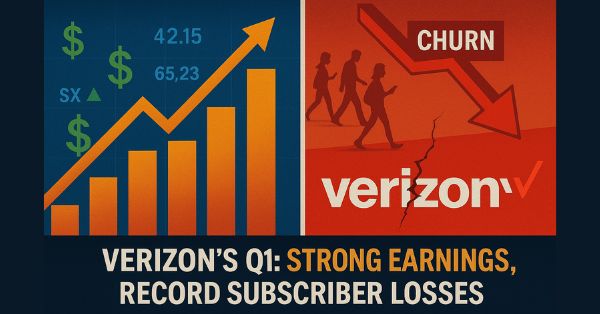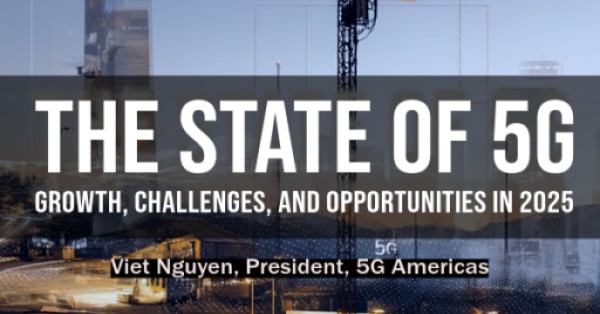The world’s first demonstration of an automated driving application supported by 5G Standalone network slicing with controlled network features for QoS (Quality of Service) was announced today by Deutsche Telekom, BMW Group, Valeo, Qualcomm, and Ericsson.
The partners looked into how 5G SA network slicing with various QoS features can provide successful automotive use case scenarios. For example, without a reliable network connection, many upcoming automotive uses wouldn’t be possible.
5G SA’s key feature is network slicing. This means that different areas of the network can be allocated for specific uses, depending on things like required quality of service (QoS), performance, security, or latency. In addition, the User Equipment Route Selection Policy (URSP) feature allows devices to connect to multiple slices simultaneously based on what they need.
Furthermore, a Network API was utilized to request a QoS level from the network. This capability is called Quality on Demand (QoD), and it allows for different levels of quality based on the needs of various applications. The tests showed that, under various network load situations, how these features were able to meet the QoS demands of mission-critical applications successfully.
Nicolai Martin, SVP of BMW Group Driving Experience, says: “The BMW Group sees the activities in the telecommunications industry with 5G as a central enabler for many innovative automotive features and also for Automated Valet Parking. For such a new solution, several industries must work closely together to offer the customer a valuable benefit. The aim is to build a standardized and interoperable AVP ecosystem. The BMW Group welcomes activities in the telecommunications industry, especially the CAMARA project. This is an important enabler for future services.”
Claudia Nemat, Board member of Technology and Innovation Deutsche Telekom, says: “Deutsche Telekom is excited to be part of this activity to demonstrate the capabilities of advanced network features like 5G network slicing with integrated APIs to meet the Quality of Service demands of automotive use cases. Close cross-industry collaboration is essential to co-innovate and develop new solutions that benefit customers. This is an enabler for future services.”
Eric Ekudden, Group CTO, Senior Vice President, and Head of Technology & Strategy at Ericsson, says: “Ericsson has provided the End-to-End Network for a successful Proof of Concept. We continue to support the realization of Use Cases using network slicing and exposure capability to monetize 5G network investment for Communication Service Providers (CSP).”
Enrico Salvatori, SVP & President Qualcomm Europe/MEA, Qualcomm Europe, Inc., says: “We are proud to be part of this project, utilizing Qualcomm Technologies’ long-established expertise in 5G and wireless innovation to help enable advanced features like 5G network slicing for reliable interoperability and improved quality-of-service. We look forward to continuing collaborating with partners across the automotive ecosystem to usher in the next generation of autonomous driving applications.”
Marc Vrecko, Business Group President Valeo Comfort & Driving Assistance Systems, says: “Communication between infrastructure and vehicles is a safety-critical element. Automated Valet Parking, developed in cooperation with BMW Group and tested with Deutsche Telekom, relies in part on Valeo software and systems both embedded in the car and installed in the parking infrastructure itself. Testing 5G interfaces jointly with Deutsche Telekom convinced us of the performance of cellular networks. To make mobility safer and smarter, Valeo has integrated advanced driver assistance systems (ADAS) into one of the main focuses of its innovations.”
Network APIs and Network Slicing
In February 2022, Deutsche Telekom announced that, in cooperation with the BMW Group and Valeo, they had completed initial tests for Quality of Service using the Quality on Demand feature as a network API. The application programming interface was tested with Automated Valet Parking (AVP), and the results were presented at Mobile World Congress (MWC) 2022.
While the CAMARA initiative was announced by GSMA, Quality on Demand was the first network API to be standardized under this global initiative. The Quality on Demand standard allows for a better quality of service between networks, technology vendors, cloud providers, operating system developers, and application creators.
Automated Driving Trial with Partners
There are an increasing number of automotive applications that require a dependable mobile network connection. A few examples of these use cases are safety features, remote control functions (like opening/closing doors remotely), and assisted or automated driving features.
The partners sought to learn if and how they could provide QoS features in future network deployments. To do so, they ran tests at Deutsche Telekom testing facilities in Berlin Winterfeldtstraße. The test environment relied on cutting-edge Ericsson 5G SA technologies, including QoS support based on network slicing features and network APIs.
This trial saw BMW Group and Valeo provide mission-critical use cases for automated driving using the “Snapdragon Auto 5G Modem-RF” from Qualcomm Technologies, Inc. This enabled testing of the network slicing features to support interoperability. Deutsche Telekom, BMW Group, Valeo, and Ericsson all collaborated on designing the trial setup and related test cases.
Testing Network API, Network Slicing, and URSP features
The tests performed indicated that QoS features are extremely valuable about achievable bandwidth, stability, and latency. The partners showed how 5G SA network slicing allows for an automotive use case scenario that is supported by application-grade connectivity. This is enabled by three key QoS features in the operator network:
Network API – The trial demonstrates how, even in congested network situations, a mission-critical application can request and receive the improved network performance it needs to function properly by utilizing Quality on Demand (QoD) API in an enhanced mobile broadband (eMBB) slice.
Network Slicing – In the mission-critical scenario, data was transmitted via a high-quality slice, while in a non-mission-critical scenario, the data was transmitted via an eMBB slice. The trial’s measurement results revealed that, even in congested conditions where many users are simultaneously sharing mobile network resources, the automated driving function was always served with the necessary bandwidth.
UE Route Selection Policy – URSP was utilized to select network slices on the device side corresponding with available network slice options on the network end. From different applications, application traffic can be processed by numerous slices working in tandem, as demonstrated by our findings. For example, one high-priority application’s traffic would use a high-quality slice, while noncritical app traffic uses an eMBB slice.





















